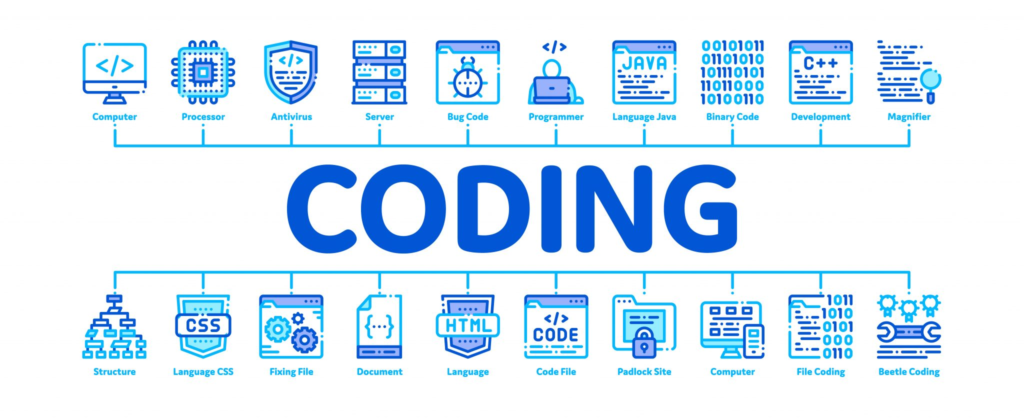Definition
A programming language is a formal language consisting of a set of rules, syntax, and semantics used to write computer programs. It serves as a medium of communication between humans and computers, allowing programmers to write instructions that the computer can understand and execute.
Programming languages provide a structured way to express algorithms and logic, enabling programmers to develop software applications, scripts, and other computational solutions. They offer a set of predefined keywords, symbols, and constructs that can be combined to create meaningful code. These languages vary in their level of abstraction, complexity, and purpose.

Types of Programming Languages
High-level languages
These languages are closer to human language and are easier to read and write. Examples include Python, Java, C++, and JavaScript.
Low-level languages
These languages are closer to machine language and provide more control over hardware resources. Examples include Assembly language and Machine code.
Syntax and Semantics
Syntax
The rules and structure of a programming language that define how programs are written. It includes keywords, operators, punctuation, and other elements.
Semantics
The meaning and interpretation of the code written in a programming language. It defines how the instructions are executed and what the program does.
Variables and Data Types
Variables
Named storage locations used to hold values in a program. They can store different types of data and their values can be modified during program execution.
Data Types
Represent different kinds of data that can be stored in variables. Examples include integers, floating-point numbers, strings, booleans, and arrays.
Control Structures
Conditional Statements
Allow the program to make decisions based on certain conditions. Common constructs include if-else statements, switch statements, and ternary operators.
Loops
Enable repetition of a set of instructions until a condition is met. Common loop structures include for loops, while loops, and do-while loops.
Functions and Methods
Functions
Blocks of code that perform a specific task and can be reused multiple times in a program. They typically accept input parameters and return output values.
Methods
Functions that are associated with specific objects or classes in object-oriented programming languages.
Libraries and Frameworks
Libraries
Collections of pre-written code that provide specific functionality and can be used by programmers to simplify development tasks.
Frameworks
Predefined structures and tools that help in building applications by providing a foundation for coding conventions, libraries, and utilities.
Object-Oriented Programming (OOP)
A programming paradigm that organizes code into objects, which are instances of classes. It emphasizes concepts such as encapsulation, inheritance, and polymorphism.
Integrated Development Environments (IDEs)
Software tools that provide an integrated environment for writing, debugging, and running programs. IDEs often include features like code editors, compilers, and debuggers.
Popular Programming Languages
Some widely used programming languages include Python, Java, C/C++, JavaScript, Ruby, Swift, Go, and PHP. The choice of language depends on the specific application, platform, and personal preference.
Programmers use programming languages to define the behavior and functionality of software, specify data structures and algorithms, manipulate data, interact with input/output devices, and control the flow of execution. Each programming language has its own syntax rules, which determine how programs are written and structured, and semantics rules, which define the meaning and interpretation of the code.
![]()
Views: 45